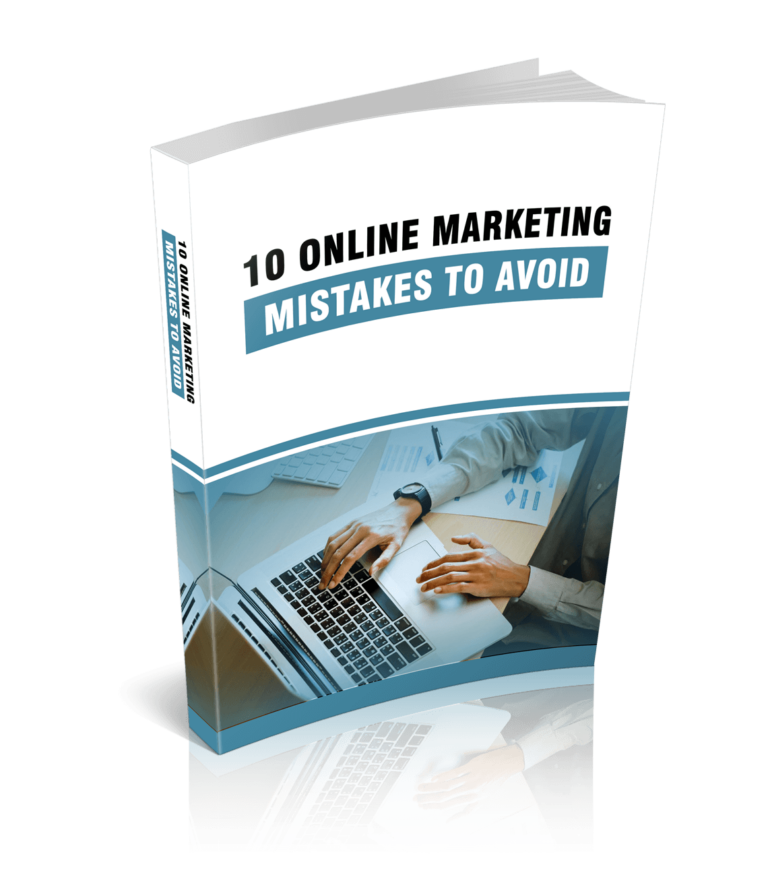As the demand for audiobooks continues to grow, more and more authors are looking for ways to get their books into audio format. Amazon’s Audible Creation Exchange (ACX) is one of the most popular options for publishing audiobooks, and it’s not hard to see why. ACX makes it easy to find the right narrator for your book, and they take care of all the production and distribution for you. Best of all, you retain all the rights to your audiobook, and you get to set your own price.
In this article, we will discuss the best ways to get started publishing on this platform.
SUBSCRIBE TO INCOME PATROL
Get updates on the latest posts and more from Income Patrol straight to your inbox.
1) Find the right narrator for your audiobook.
Audiobooks are a great way to enjoy a story, but finding the right narrator is key to ensuring you enjoy the experience. With so many options available, it can be tough to know where to start. Here are a few tips to help you find the right narrator for your next audiobook.
- Consider the book itself. What kind of story is it? Is it light-hearted or serious? Is it fast-paced or slow-moving? Knowing the tone of the book will help you find a narrator that is a good fit.
- Read reviews. Once you have a few potential narrators in mind, read reviews of their work. See what other listeners have to say about their performance.
- Try a sample. Most audiobook retailers will offer a sample of the book so you can get a feel for the narrator’s style. Listen to a few minutes of the sample to see if the narrator’s voice is a good match for the book.
- Go with your gut. In the end, it’s important to choose a narrator that you feel comfortable with. If you’re not sure, go with your gut instinct and you’re sure to find a narrator that you’ll enjoy.
2) Make sure your audiobook is well-produced.
As an author, narrator, or publisher, you want to make sure your audiobook is well-produced so that it sounds its best and engages listeners. Here are some tips on how to do that:
- Make sure the recording quality is good. This means choosing a quiet recording environment and using professional equipment. The narrator should be able to recording without any background noise or echo.
- Edit the recording. This includes removing any errors, mispronunciations, or pauses. It should sound smooth and polished.
- Choose appropriate background music and sound effects. These can help set the mood and atmosphere of the audiobook. However, they should be used sparingly so as not to overpower the narration.
- Test the audiobook before releasing it. Listen to it yourself and get feedback from others. This will help you catch any issues and make sure the audiobook is enjoyable to listen to.
3) Pay attention to pacing.
Pacing is important for audiobooks because it helps the listener follow along and understand what is happening. A good pace is not too slow or too fast, but just right for the listener to comprehend. If an audiobook is paced too slowly, the listener may become bored and not want to continue. However, if an audiobook is paced too quickly, the listener may become confused and miss important information.
To ensure a good pace for your audiobook, you should first determine the target audience. Is the audiobook for children, adults, or both? Once you know the target audience, you can better gauge how fast or slow to read the book. In general, children’s audiobooks should be read slowly so that they can understand the story, while adult audiobooks can be read at a faster pace.
Another tip for maintaining a good pace is to practice reading the book out loud before recording it. This will help you get a feel for the natural flow of the story and how fast or slow you should read it. Additionally, be sure to take breaks while recording so that you do not get fatigued and start to speed up. If you need to, you can always go back and edit the pace of the audiobook after recording it.
4) Keep it under 10 hours.
- Keep an eye on the clock: Make sure you are aware of how long your book is. If it is getting close to 10 hours, start to wrap things up.
- Edit your book: Take a look at your book and see if there are any areas that can be cut. Remember, less is more when it comes to audiobooks.
- Be strategic with your pauses: In order to keep your book under 10 hours, you will need to be strategic with your pauses. Make sure you are not pausing too often, as this will add to the overall length of the book.
- Keep it simple: Try to keep your book as simple as possible. This means avoiding long, complex sentences and ideas. Keep your book easy to follow and understand.
- Don’t add extra content: When you are creating your audiobook, resist the temptation to add extra content. This will only make your book longer and more difficult to get through.
5) Choose the right royalty option.
There are two different royalty options for audiobooks on ACX. The first option is the 50/50 royalty split, which means that the author and narrator will each receive 50% of the royalties earned from the sale of the audiobook. The second option is the 40/60 royalty split, which means that the author will receive 40% of the royalties earned, and the narrator will receive 60%.
So, which royalty option is right for you? If you’re looking to earn the most money possible from the sale of your audiobook, then the 40/60 royalty split is the way to go. However, if you’re more concerned with ensuring that your narrator is compensated fairly for their work, then the 50/50 royalty split is the better option. Ultimately, the decision of which royalty option to choose is up to you.
6) Promote your audiobook.
If you have an audiobook that you want to promote, there are a few things you can do to get the word out. First, you can create a landing page for your audiobook on your website. This landing page should include information about the audiobook, such as the title, author, a summary, and a link to purchase the audiobook.
You can also promote your audiobook on social media, using hashtags, images, and links to drive traffic to your landing page. You can also run ads for your audiobook on platforms like Amazon and Goodreads.
7) Get reviews.
When you first release your audiobook, it can be difficult to get noticed. One way to help is to actively seek out reviews. Here are some tips on how to get reviews for your audiobook:
- Utilize your social media platforms. Let your friends, followers, and fans know that you have an audiobook available and that you would appreciate their feedback. You can even offer a discount code in exchange for an honest review.
- Ask your narrator or other involved parties to spread the word. If they’re willing to help promote your audiobook, they may be willing to leave a review as well.
- Seek out reviewers who specialize in audiobooks. There are many bloggers and reviewers who focus specifically on audiobooks. A quick Google search should help you find some leads.
- Make it easy for reviewers to leave a review. Include links to popular audiobook review sites in your promotional materials.
- Be patient. It can take time for reviews to start trickling in. Keep promoting your audiobook and eventually you should start seeing some results.
8) Keep your audiobook up to date.
Here are a few ways to keep your audiobook up to date:
- Update the bio section.
If any of the information in your bio has changed, be sure to update it in your audiobook. This includes your name, contact information, website, and anything else that might have changed.
- Record new introductions.
If you’ve recorded a new introduction for your book, be sure to include it in the audiobook version. This is a great way to let listeners know what’s new in the book and why they should listen to it.
- Add new chapters.
If you’ve added any new chapters to your book, be sure to include them in the audiobook. This will keep listeners up to date on the latest information in your book.
- Re-record old chapters.
If you’ve made any changes to your book, you may want to consider re-recording old chapters. This will ensure that listeners have the most accurate information.
- Update the cover.
If you’ve updated the cover of your book, be sure to update the audiobook version as well. This way, listeners will be able to easily identify your book when they see it.
Keeping your audiobook up to date is important if you want to keep listeners engaged and informed. By following these tips, you can be sure that your audiobook is always current.
9) Be patient.
The key is to be patient and keep producing high-quality content that your listeners will enjoy. If you’re consistently putting out great content, eventually you’ll find an audience that’s eager to hear more from you.
It can be difficult to be patient when you’re trying to build an audience for your audiobook, but it’s important to remember that it takes time to gain traction. The key is to keep producing high-quality content that your listeners will enjoy. If you’re consistently putting out great content, eventually you’ll find an audience that’s eager to hear more from you.
Don’t get discouraged if you don’t see results immediately. It can take weeks or even months for an audiobook to find its audience. The important thing is to keep putting out great content and to be patient. eventually, your hard work will pay off and you’ll start to see the results you’re hoping for.
10) Offer discounts.
Offering discounts on your audiobook from time to time is a great way to encourage more sales. You can offer a discount for a limited time or for a certain number of audiobooks sold. This will help you to reach a larger audience and boost your sales.
When you offer a discount on your audiobook, be sure to promote it through your social media channels and email list. You can also promote it through paid advertising. If you have a large audience, you can offer a discount for a limited time. This will help you to reach a larger audience and boost your sales.
If you have a smaller audience, you can offer a discount for a certain number of audiobooks sold. This will help you to reach a larger audience and boost your sales.
11) Make sure to price your audiobook competitively.
When you are ready to price your audiobook, do some research on what other audiobooks in your genre are priced at. You want to make sure to price your audiobook competitively so that it stands out among the crowd. If your audiobook is priced too high, potential customers may be turned off and opt for a cheaper alternative. Conversely, if your audiobook is priced too low, customers may question the quality of your work.
Once you have a good understanding of the going rate for audiobooks in your genre, you can then start to adjust your price accordingly. If you feel that your audiobook offers superior content or production value, you may opt to price it slightly higher than the competition. Conversely, if you feel that your audiobook is on the lower end of the quality spectrum, you may want to price it slightly lower.
It is also important to keep in mind that pricing is not static. As the market for audiobooks ebbs and flows, so too will the prices of individual titles. As such, it is important to periodically check in on the prices of similar audiobooks and adjust your own price accordingly. By keeping a close eye on the competition, you can ensure that your audiobook always offers the best value for the price.
12) Use keywords and other SEO techniques.
Here are a few tips for using keywords and other SEO techniques to make your audiobook more discoverable:
- Do your research. Keyword research is essential for any SEO campaign, and it’s no different for audiobooks. Use keyword research tools to find out which keywords are most relevant to your audiobook.
- Use keywords in your title and description. When people are searching for audiobooks, they’ll often use keywords. Make sure that your audiobook’s title and description include the keywords that you’ve researched.
- Optimize your website. If you have a website for your audiobook, make sure that it’s optimized for SEO. This means using keywords throughout the site, including in the title, headings, and content.
13) Speak at conferences and events.
Conferences and events are a great way to reach new audiences for your audiobook. Here are some tips on how to make the most of these opportunities:
- Plan ahead. Make sure you know the conference or event schedule well in advance so you can plan your participation accordingly.
- Choose your topics wisely. When selecting which conferences or events to participate in, choose those that will be most relevant to your audiobook topic. This will help ensure that you attract the right audience.
- Promote your appearance. Make sure to promote your upcoming appearance at conferences or events through your website, social media, and other channels. This will help generate interest and ensure that people know when and where to find you.
- Prepare your materials. Have a well-crafted elevator pitch, business cards, and other promotional materials ready to go. These will help you make a good impression and attract potential listeners.
- Be engaging. When you’re speaking at a conference or event, be sure to be engaging and charismatic. This will help you capture people’s attention and interest.
- Follow up. After the conference or event, be sure to follow up with the people you met. This will help you stay top of mind and build relationships that could lead to future business.
CONCLUSION
Audiobooks are a great way to get your work out there, and they can be a lot of fun to make. But where do you start? Here are a few tips to get you started on your audiobook publishing journey.
- Pick the right book. Not all books are going to work well as audiobooks. If you’re not sure if your book is a good fit, consider hiring a professional narrator to take a look at it and give you their opinion.
- Find a narrator. Once you’ve found a book that you think will work well as an audiobook, it’s time to find a narrator. There are a few ways to go about this. You can find someone who specializes in audiobooks, or you can try to find someone who is already familiar with your work.
- Record your audiobook. This is the fun part! Once you’ve found a narrator, it’s time to get recording. Make sure you have a good quality microphone and recording software, and then let the narrator do their thing.
- Edit and master your audiobook. Once you have all of your recording done, it’s time to edit and master your audiobook. This is where you’ll make sure everything sounds just right, and it’s also where you’ll add any special effects or music that you want.
- Publish your audiobook. Now it’s time to get your audiobook out there! You can self-publish, or you can submit it to a traditional publisher. Either way, make sure you promote your audiobook so people can find it and enjoy it.
And if you follow all the steps we explained in this report, you’re surely going to make good sales with your audiobooks.
LIMITED-TIME OFFER!
With LIFETIME ACCESS membership ($67) you have access to ALL exclusive materials (current and upcoming) for lifetime. We create new courses, ebooks, webinars and downloads on a regular basis. This offer expires soon and will be replaced with monthly-paid subscription, so hurry up! Get access HERE!





